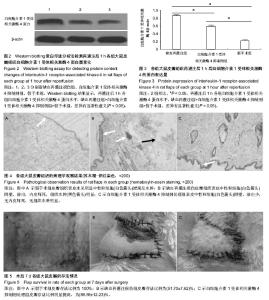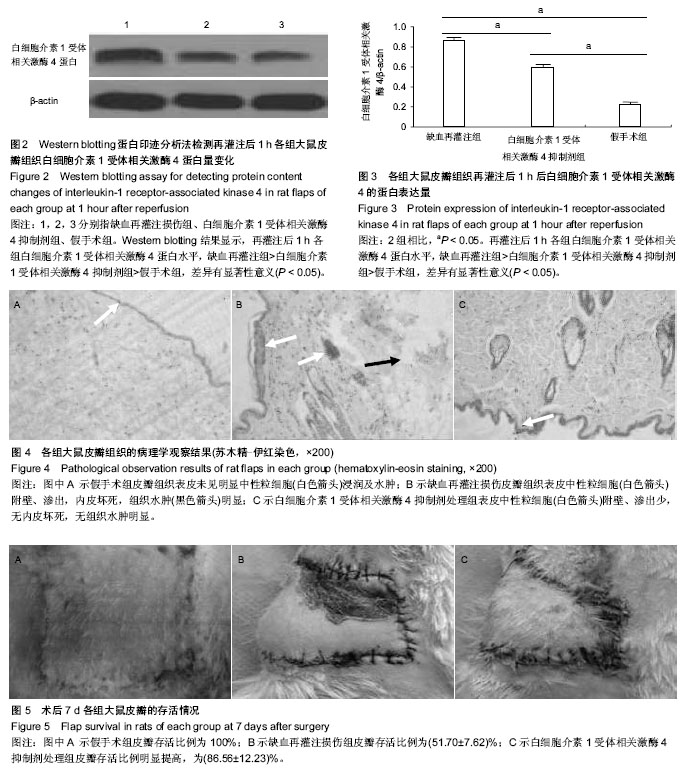| [1] Reichenberger MA, Heimer S, Schaefer A, et al. Adipose derived stem cells protect skin flaps against ischemia-reperfusion injury. Stem Cell Rev Reports. 2012;8(3):854-862.
[2] O’Neil A, Hofer S, Ashrafpour H, et al. Local Mild Hypothermia (30–32° C) is Effective in Protection of Ex Vivo Human Skeletal Muscle from Hypoxia/Reoxygenation Injury. Plastic Reconstruct Surg. 2014;133(3s):166-167.
[3] 赵国红,谢振军,郑竞舟,等.皮瓣移植在手外伤后软组织缺损中的应用[J].江西医药,2013,47(10):877-880.
[4] 孙宝东,吴鸣,闫迎军,等.股前外侧带蒂皮瓣修复外阴癌切除术后皮肤软组织缺损[J].中华医学杂志,2005,85(48):3442-3443.
[5] 姚群,芮永军,寿奎水,等.改良游离尺动脉腕上皮支下行支皮瓣移植修复手指软组织缺损[J].中华手外科杂志,2014,30(1):47-49.
[6] Brevoord D, Kranke P, Kuijpers M, et al. Remote ischemic conditioning to protect against ischemia-reperfusion injury: a systematic review and meta-analysis. PLoS One.2012;7(7): e42179.
[7] Liao YF, Zhu W, Li DP, et al. Heme oxygenase-1 and gut ischemia/reperfusion injury: A short review. World J Gastroenterol. 2013;19(23): 3555.
[8] Perrelli M G, Pagliaro P, Penna C. Ischemia/reperfusion injury and cardioprotective mechanisms: role of mitochondria and reactive oxygen species. World J Cardiol. 2011;3(6):186.
[9] Jaeschke H, Woolbright BL. Current strategies to minimize hepatic ischemia–reperfusion injury by targeting reactive oxygen species. Transplant Rev. 2012;26(2):103-114.
[10] Sanderson TH, Reynolds CA, Kumar R, et al. Molecular mechanisms of ischemia–reperfusion injury in brain: pivotal role of the mitochondrial membrane potential in reactive oxygen species generation. Mol Neurobiol. 2013;47(1):9-23.
[11] Jaeschke H, Woolbright BL. Current strategies to minimize hepatic ischemia–reperfusion injury by targeting reactive oxygen species. Transplant Rev. 2012;26(2):103-114.
[12] Wang WZ, Baynosa RC, Zamboni WA. Update on ischemia-reperfusion injury for the plastic surgeon: 2011. Plastic Reconstruct Surg.2011;128(6):685e-692e.
[13] 简麒超,吴小蔚,宋海臣,等.TLR4信号转导通路活化在皮瓣缺血再灌注损伤中的作用[J].中华整形外科杂志,2012,28(6):444-448.
[14] Chen W, Saxena A, Li N, et al. Endogenous IRAK-M attenuates postinfarction remodeling through effects on macrophages and fibroblasts. Arterioscler Thromb Vasc Biol.2012;32(11):2598-2608.
[15] Yang YF, Chen Z, Hu SL, et al. Interleukin-1 receptor associated kinases-1/4 inhibition protects against acute hypoxia/ischemia-induced neuronal injury. Neuroscience. 2011;196: 25-34.
[16] Cetinkale O, Bilgic L, Bolayirli M, et al. Involvement of neutrophils in ischemia•reperfusion injury of inguinal island skin flaps in rats.Plast Reconstr Surg. 1998;102(1):153-160.
[17] Scarabelli T, Stephanou A, Rayment N, et al. Apoptosis of endothelial cells precedes myocyte cell apoptosis in ischemia/reperfusion injury. Circulation. 2001;104(3):253-256.
[18] Mayta H, Talley A, Gilman RH, et al. Differentiating Taenia solium andTaenia saginata Infections by Simple Hematoxylin-Eosin Staining and PCR-Restriction Enzyme Analysis. J Clin Microbiol. 2000;38(1):133-137.
[19] Cuzzocrea S, Riley DP, Caputi AP, et al. Antioxidant therapy: a new pharmacological approach in shock, inflammation, and ischemia/reperfusion injury. Pharmacol Rev.2001;53(1):135-159.
[20] Dixon RA, Lamb CJ, Masoud S, et al. Metabolic engineering: prospects for crop improvement through the genetic manipulation of phenylpropanoid biosynthesis and defense responses-a review. Gene.1996;179(1):61-71.
[21] Elmore S. Apoptosis: a review of programmed cell death. Toxicol Pathol. 2007;35(4):495-516.
[22] McCord JM. Oxygen-derived radicals: a link between reperfusion injury and inflammation[C]//Federation proceedings. 1987;46(7):2402-2406.
[23] Lentsch AB, Kato A, Yoshidome H, et al. Inflammatory mechanisms and therapeutic strategies for warm hepatic ischemia/reperfusion injury. Hepatology.2000;32(2):169-173.
[24] 王涛,文亮.全脑缺血再灌注损伤后炎性细胞因子的变化及其意义[J].中国危重病急救医学,2000,12(5):290-291.
[25] 李帆,芮耀诚.IRAK-4在白介素-1受体/Toll样受体(IL-1R/TLRs)介导的炎症信号通路中的关键作用[J].药学实践杂志,2011,29(1):1-3.
[26] Verstrepen L, Bekaert T, Chau TL, et al. TLR-4, IL-1R and TNF-R signaling to NF-κB: variations on a common theme. Cell Mol Life Sci.2008;65(19):2964-2978.
[27] Lin SC, Lo YC, Wu H. Helical assembly in the MyD88–IRAK4–IRAK2 complex in TLR/IL-1R signalling. Nature. 2010;465(7300):885-890.
[28] Suzuki N, Suzuki S, Duncan GS, et al. Severe impairment of interleukin-1 and Toll-like receptor signalling in mice lacking IRAK-4. Nature.2002;416(6882):750-756.
[29] Lu YC, Yeh WC, Ohashi PS. LPS/TLR4 signal transduction pathway. Cytokine.2008;42(2):145-151.
[30] Sun K, Chen Y, Liang S, et al. Effect of taurine on IRAK4 and NF-kappa B in Kupffer cells from rat liver grafts after ischemia-reperfusion injury. Am J Surg. 2012;204(3):389-395.
[31] Gao Y, Fang X, Sun H, et al. Toll-like receptor 4-mediated myeloid differentiation factor 88-dependent signaling pathway is activated by cerebral ischemia-reperfusion in hippocampal CA1 region in mice. Biol Pharm Bull.2009;32(10):1665-1671.
[32] Crack PJ, Bray PJ. Toll-like receptors in the brain and their potential roles in neuropathology. Immunol Cell Biol.2007; 85(6): 476-480.
[33] 刘作金,李生伟,游海波,等.内毒素预处理诱导大鼠供肝缺血再灌注交叉耐受机制的研究[J].中华实验外科杂志,2006,22(11): 1335-1337.
[34] Arslan F, de Kleijn DPV, Timmers L, et al. Bridging innate immunity and myocardial ischemia/reperfusion injury: the search for therapeutic targets. Curr Pharm Des.2008;14(12):1205-1216.
[35] Medvedev AE, Lentschat A, Kuhns DB, et al. Distinct mutations in IRAK-4 confer hyporesponsiveness to lipopolysaccharide and interleukin-1 in a patient with recurrent bacterial infections. J Exp Med.2003;198(4):521-531. |



